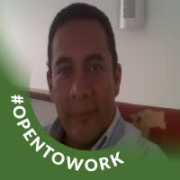

VMware vSphere and Proxmox VE compete in the virtualization technology category, offering distinct benefits for different user needs. While VMware vSphere excels in enterprise-grade features, Proxmox VE offers cost-effective solutions for smaller organizations, presenting a competitive edge in specific sections.
Features: VMware vSphere is equipped with centralized management, vMotion, and high availability, making it indispensable for larger enterprises requiring advanced resource management. Proxmox VE provides Linux container support and a web-based management interface, making it appealing to users seeking a robust yet cost-effective virtualization platform.
Room for Improvement: VMware vSphere faces challenges with licensing costs, GUI responsiveness, and integration with non-standard devices. Proxmox VE could enhance storage management, enterprise-level support, and the user interface to better meet enterprise demands and usability.
Ease of Deployment and Customer Service: VMware vSphere offers extensive features suitable for large-scale deployments. However, deployment complexities often necessitate paid support for optimum use. Proxmox VE’s open-source model allows for straightforward deployment backed by a strong user community, although it requires more independent management without extensive paid support options.
Pricing and ROI: VMware vSphere is often critiqued for its higher cost, but it delivers high ROI through advanced capabilities and robust infrastructure for enterprises with specific needs. Proxmox VE provides significant cost savings with its open-source model, yielding substantial ROI for smaller businesses and those prioritizing fundamental features without large expenditures.
We can say 10% is the approximate amount of savings because most of the things are automated and streamlined, so the manual work is eliminated in most cases.
Recently, support has been less friendly and slower, especially after the company was acquired by Broadcom.
The quality of support should be improved; overall quality.
If we have issues, the support tends to be unreliable
Scaling is easy, whether it is hyperconverged or a three-tier architecture.
It is a highly scalable solution.
VMware vSphere is highly scalable in terms of the number of users and the number of servers it can handle.
While they are generally stable, if outages occur, they tend to be due to brands like HP or Dell, not VMware vSphere itself.
It is a very stable hypervisor solution.
Mostly we don't have issues, but sometimes we have faced some stability issues because of some bugs and some CPU compatibility issues with Intel CPUs.
Although the product is very strong and includes all necessary features, the high pricing drives many customers to avoid using it.
VMware vSphere has a built-in feature called Fault Tolerance, but it's very limited for very limited VMs or very limited core count or CPU count, so it's not so useful for all the environment because of the limitations.
Sometimes, it is difficult to find documentation for specific tools and solutions.
Many customers are trying to avoid it due to its high cost.
Costs significantly increased from perpetual to subscription, with prices rising by two to three times over three to five years.
The solution is too expensive.
The vMotion feature is beneficial for online migration of virtual machines from one host to another without downtime.
I always use VMware vSphere vMotion; we work with this feature all the time. vMotion is very useful; that's why we use the virtualization.
The tool is highly available, which is crucial for implementing critical applications requiring 24/7 availability.
| Product | Market Share (%) |
|---|---|
| VMware vSphere | 16.8% |
| Proxmox VE | 16.1% |
| Other | 67.1% |


| Company Size | Count |
|---|---|
| Small Business | 44 |
| Midsize Enterprise | 11 |
| Large Enterprise | 10 |
| Company Size | Count |
|---|---|
| Small Business | 174 |
| Midsize Enterprise | 137 |
| Large Enterprise | 256 |
Proxmox VE is a complete virtualization management solution for servers. It is a powerful open-source platform and supports two virtualization technologies - KVM (Kernel-based Virtual Machine) for virtual machines and LXC for containers. Proxmox VE has a central user interface that allows you to manage not only VMs and containers, but also storage resources, network configuration, and high availability for clusters. It is enterprise-ready and is valued for its scalability and maximum flexibility, enabling you to virtualize very demanding workloads. Proxmox VE makes it possible for you to easily install, manage, and monitor hyper-converged (HCI) data centers.
Proxmox VE Key Features
The Proxmox VE platform has many powerful features, including:
pen-source software, high-available clusters, command line, fencing, a web-based management interface, flexible storage options, REST API, live/online migration, storage replication stack, software defined storage, virtualized networking, backup and restore, two-factor authentication, role-based administration, and VM templates and clones.
Proxmox VE Benefits
Some of the biggest benefits of Proxmox VE are:
Reviews From Real Users
Here is some feedback from some of our users who are currently using the solution:
A PeerSpot user who is a director at a tech services company says, “The most valuable features of Proxmox VE are the ease of containerization. Overall the solution is generic, feature-rich, and has compatibility.”
Another PeerSpot user who is a head of IT operations at a tech services company mentions that "In addition to the virtualization, the firewall and the routing functions that it provides are valuable."
Deepen D., director and CTO at TechnoInfotech, expresses that "The feature that I have found most valuable is that its storage container, LVM, and everything else work out of the box."
VMware vSphere is a versatile virtualization platform known for its ease of use, flexibility, and high availability. It supports seamless migration, optimal resource allocation, and centralized management, making it highly suitable for diverse infrastructure needs.
VMware vSphere is widely adopted for its virtualization capabilities that enhance hardware efficiency and ensure minimal downtime through features like High Availability and Distributed Resource Scheduler. Despite criticisms about high licensing costs and limited fault tolerance, it remains a preferred choice due to its stability, scalability, and robust integration options. Users appreciate its efficiency in managing virtual machines and hosting enterprise applications, although challenges with web client performance and hardware compatibility are noted. Organizations often look for better integration with cloud services and enhanced automation and scalability.
What are the core features of VMware vSphere?
What benefits and ROI can businesses look for?
VMware vSphere is implemented across sectors like healthcare, finance, and education for server virtualization, data center management, and private cloud creation. Its use in facilitating business-critical operations ensures high availability and efficient resource use, supporting both development and production environments.
We monitor all Server Virtualization Software reviews to prevent fraudulent reviews and keep review quality high. We do not post reviews by company employees or direct competitors. We validate each review for authenticity via cross-reference with LinkedIn, and personal follow-up with the reviewer when necessary.